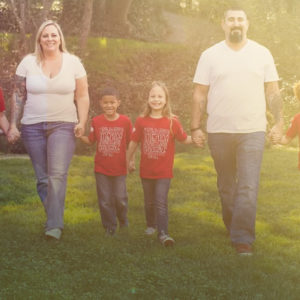Improving the Caregiver Experience During COVID-19
By Senator Elizabeth Dole & Paula Cobb
The year of Covid-19 has caused stress, disruption, and pain for countless families in the U.S. and around the world. We’ve seen loss, grieving, and resilience firsthand in many of our own families – and that’s why it’s vital to appreciate the heroes in our lives. We often first think about the victims of the novel coronavirus, but it’s important to also remember the caregivers who quietly carry on, despite the additional external stress of the pandemic. That’s why the work of organizations like the Elizabeth Dole Foundation (EDF) is so important – recognizing the caregivers who are by the sides of the ill before, during, and after the pandemic.
This crisis gives us another opportunity to prove our resilience as a community and nation by expanding our healthcare system’s current capacity to match tomorrow’s needs.

Photo Credit: Philips
Using technology to connect care has powerful capabilities. For example, bringing care into the home, via telehealth, on a smart device can save time, stress, and anxiety for both the caregiver and the patient they love. Technology allows the clinical teams to access vital data through remote monitoring and to see patterns and trends that may indicate a pending problem in the patient. A stronger healthcare system means continuing to move caregiving beyond the hospital’s walls. This flexibility allows care to be delivered in lower-cost and lower-risk settings, scaling to more places to serve more patients.
Continuing to foster partnerships has also become integral to building the most resilient healthcare system possible. For the last five years, Philips and EDF have partnered to lead a fundamental shift in how technology is delivered for the user, and more specifically, for the caregivers and their loved ones. EDF has also extended partnerships with other industry leaders in telecoms, information technology, insurance, finance, and other business sectors. While these partner programs differ in their activation and implementation of technology, each remains committed to improving the lives of veterans and their families.
With the help of EDF over the years, Philips has committed to a human-centered approach to technology and developing that technology from more than one point of view – something that isn’t always common for technology companies today.

Photo Credit: Philips
These solutions are especially crucial for our veteran populations, who face extended risk factors and are often in remote locations. And with people in mind when employing technology, there is less immediate pressure on caregivers to be the eyes and ears of care for our nation’s veterans. Care is being extended into rural and underserved communities with virtual care stations, helping those who don’t have connectivity in their homes to receive high-quality virtual care. In 2018, the Veterans Administration facilitated over 1 million video telehealth visits (1), a record for the VA.
Human-centered care allows for connected devices, remote monitoring, and customized clinical pathways to detect deterioration, especially in chronically ill patients, allowing care providers to intervene earlier, improve outcomes, and reduce costs. For example, the veteran patient population has an increased prevalence of COPD and may benefit from these types of connected solutions (2). Philips Integrated COPD Care Initiative resulted in an 80% reduction in acute 30-day readmissions and a >70% reduction in total all-cause acute care events by initiative end – driving a savings to the hospital of $1.3 million and $4.4 million, respectively* (3).
As distance and stress continue unabated due to the coronavirus, these technology solutions will only become more important. And partnerships will grow stronger, building upon industry leaders like Philips’ foundation of deep expertise, close collaboration, and a shared commitment to embracing radical innovation in healthcare.
Building a more resilient healthcare system for our patients, our veterans, and their caregivers, is at the heart of the work being done. We thank each and every one of our nation’s caregivers and frontline healthcare providers for working alongside us to develop technology that makes healthcare more approachable, more convenient, and more helpful. We couldn’t do it without you.
Senator Elizabeth Dole is Founder and Chair of the Elizabeth Dole Foundation. Paula Cobb is Head of Global Marketing, for the Connected Care business within Philips.
1. U.S. Department of Veterans Affairs, “VA exceeds 1 million video telehealth visits in FY2018”, February 7, 2019. https://www.va.gov/opa/pressrel/pressrelease.cfm?id=5196
2. Murphy DE, Chaudhry Z, Almoosa KF, Panos RJ. High prevalence of chronic obstructive pulmonary disease among veterans in the urban Midwest. Mil Med. 2011;176(5):552–560.* Results from case studies mentioned in this paper are not predictive of results in other cases. Results in other cases may vary.
3. Philips Respironics: “The Integrated COPD Care Initiative”. https://www.usa.philips.com/c-dam/b2bhc/master/education-resources/copd-insider/common/alabama-paper/the-integrated-copd-care-intitative-copd-insider.pdf






